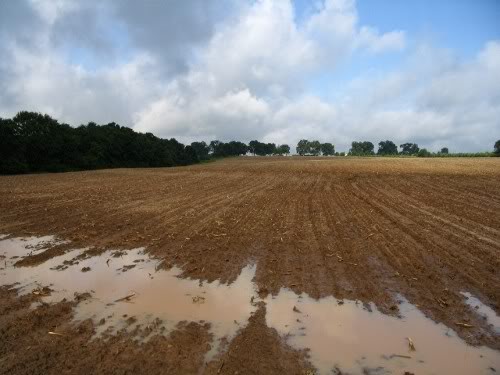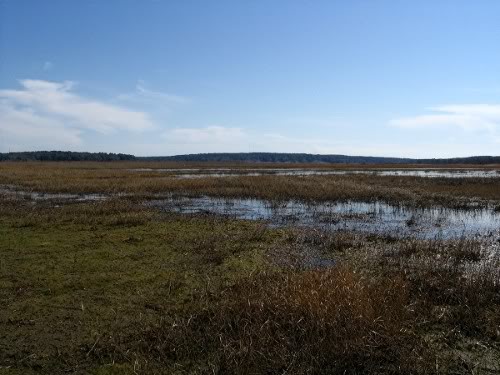On more than one occasion I have read an article about snipe hunting that included the use of decoys. I have seen it portrayed in sporting art and I have seen countless numbers of snipe decoys for sale both as modern art and working decoys. I have no reason to doubt that people shoot snipe over decoys, but the question remains whether or not the decoys played a role in attracting the birds. The use of decoys for hunting "snipe" in the past did not pertain to hunting gallinago. Before all shorebird and wading bird hunting was outlawed the term "snipe hunting" would have meant the pursuit of anything from sandpipers to curlews. I am sure that if you were to plant a few decoys along the beach or coastal marsh some passing shorebirds might be inclined to land, I just don't know that the same holds true for snipe. Consider what history shows us. If you go back and look at art prior to the midway point of the twentieth century you will see that most of the birds shown were not intended to be snipe, even if the title of the work mentions snipe by name.
Would decoys work if used along the edge of standing water in a field like this? It is reminiscent of places I have seen decoys used in hunting articles. My contention is that any snipe seeking food in this field are going to land next to the water whether there are any decoys or not. The question is whether or not you could use the decoys to entice the birds to attempt to land where you want them to instead of at another point out of gun range.

How well would decoys work if placed on an open mud flat or shoreline with sparse cover? In an open area like you see below they would be highly visible, but would they draw birds that otherwise would not have landed there?

Another thing that causes me to be skeptical about the effectiveness of decoys is that I have noticed that a flying bird doesn't seem to decoy well to a live snipe. I can't tell you how many times a snipe has been flying overhead and after circling a few times has left the area, even though I was totally concealed and it was unaware of my presence. After continuing my advance I might immediately flush from one to a handful or more snipe that didn't attract the one flying above. If a live snipe doesn't make a good decoy why should I believe an artificial one does? It is well known that for the most part snipe are far more likely to be solitary than they are to want company. Sometimes I will flush a dozen or more snipe but those are birds that are either still migrating or have recently reached their wintering grounds and have yet to disperse. The vast majority of the time I find that a snipe does not require nor seek the company of another.
So, after all that would I consider using decoys? Yes I would. If I was hunting a field and could conceal myself in one spot I would try anything I could to attract any approaching bird closer to me. Similarly, if I was hunting a stretch of shoreline that always seemed to hold snipe I would like to try hunting birds coming to that area. It would probably require hunting with a couple of beaters to flush birds from other areas in an attempt to attract them to that spot. Perhaps at some point I will be able to give it a try, that way what I already believe to be true will either be confirmed or refuted.


